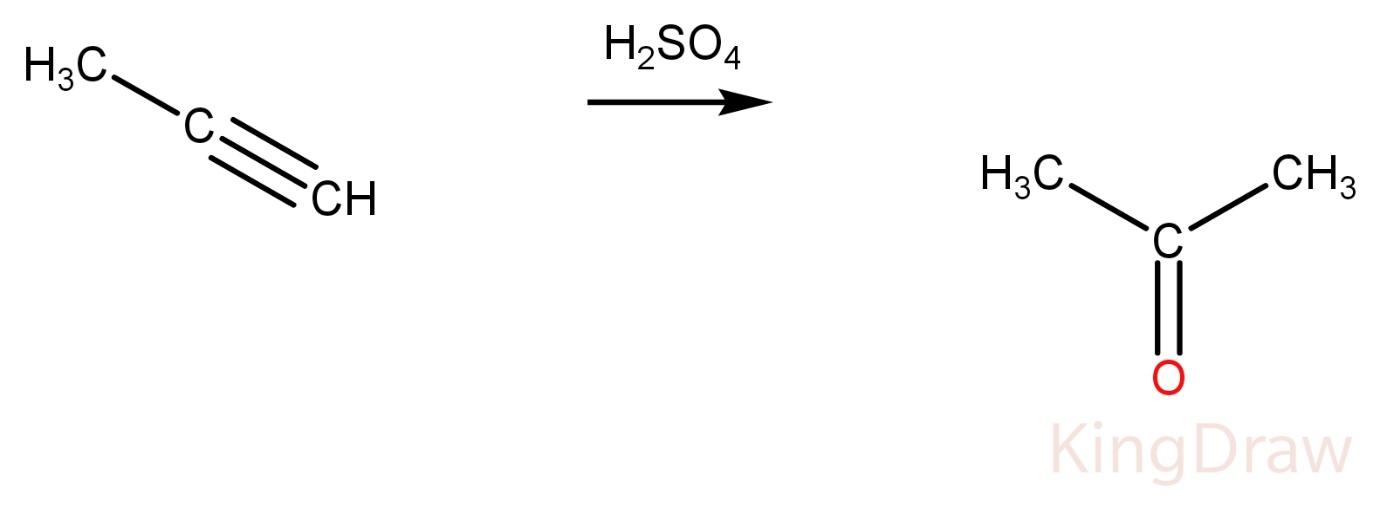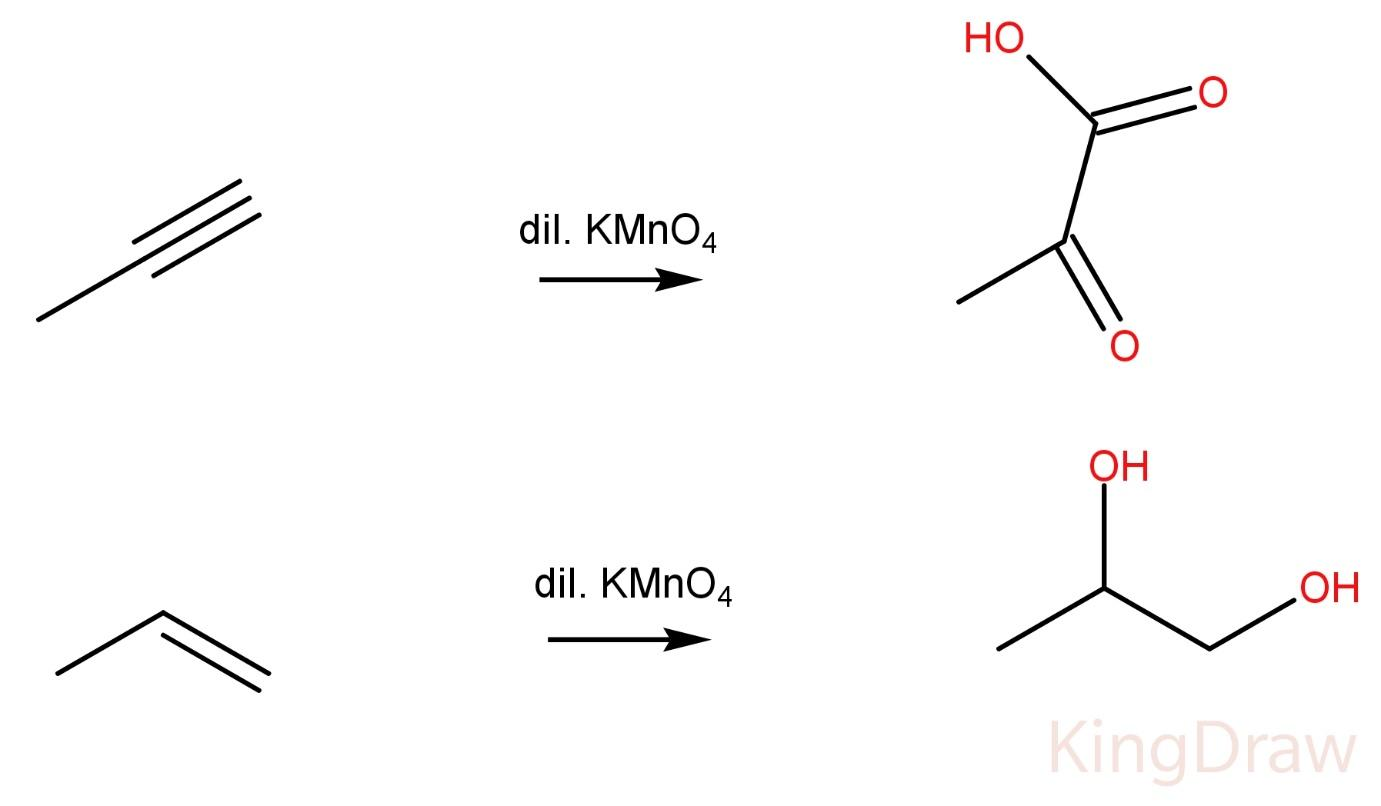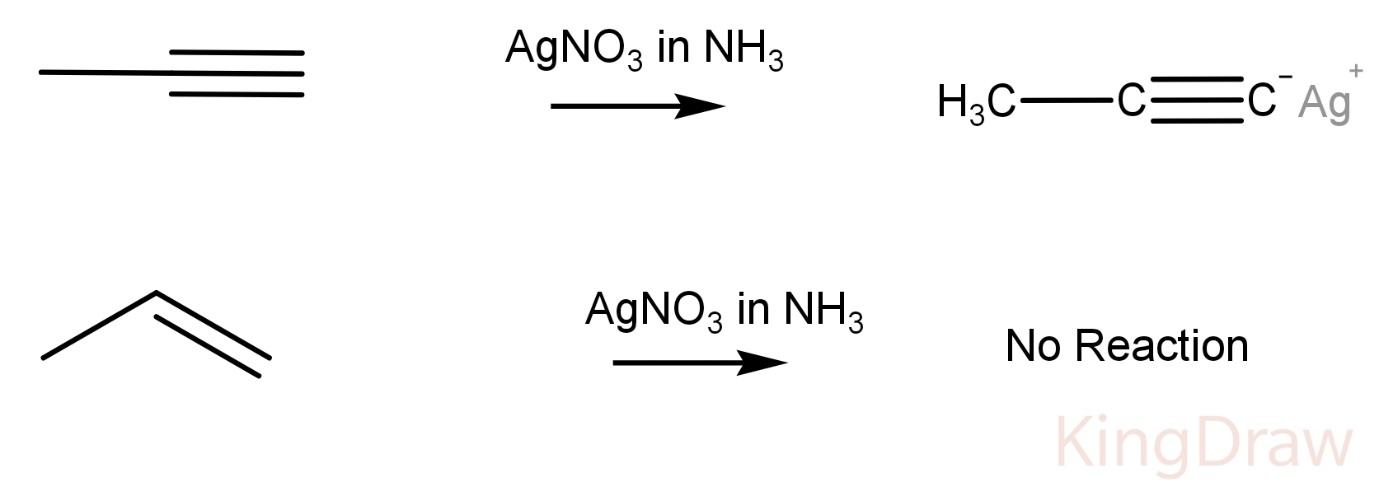
Propyne and propene can be distinguished by:
A. Conc.
B.
C. Dil.
D.
Answer
514.8k+ views
Hint: Silver nitrate in ammonia is actually Tollen’s reagent. It also reacts with acidic hydrogens to give precipitates.
Complete step by step answer:
To get the answer, let us check each reaction one by one:
Conc.
Propyne on reaction with conc.
 Propene on reaction with conc.
Propene on reaction with conc.
 Ketone and alcohol can’t be distinguished at this condition without adding any other reagent. Hence, it is not the correct option.
Ketone and alcohol can’t be distinguished at this condition without adding any other reagent. Hence, it is not the correct option.
Propyne on reaction with
 Hence, the two compounds can’t be distinguished by this process.
Hence, the two compounds can’t be distinguished by this process.
Dil.
Propynes on reaction with Dil.
Propene on reaction with Dil. Hence, the two compounds cannot be distinguished by this method also.
Hence, the two compounds cannot be distinguished by this method also.
Propyne on reaction with

This is due to the fact that Tollen’s reagent reacts with an acidic hydrogen forming a precipitate like in a propyne. The hydrogen which is replaced is very acidic due to high electronegativity of an sp hybridized carbon.
Hence, this reagent can be used to distinguish between a propyne and a propene.
Therefore, the correct answer is (D)
Note: When an alkyne is reacted with conc. Sulphuric acid, ketone is formed by the Markovnikov addition of -OH, followed by the rearrangement of the alcohol formed from enol form to keto.
Complete step by step answer:
To get the answer, let us check each reaction one by one:
Conc.
Propyne on reaction with conc.


Propyne on reaction with

Dil.
Propynes on reaction with Dil.
Propene on reaction with Dil.

Propyne on reaction with

This is due to the fact that Tollen’s reagent reacts with an acidic hydrogen forming a precipitate like in a propyne. The hydrogen which is replaced is very acidic due to high electronegativity of an sp hybridized carbon.
Hence, this reagent can be used to distinguish between a propyne and a propene.
Therefore, the correct answer is (D)
Note: When an alkyne is reacted with conc. Sulphuric acid, ketone is formed by the Markovnikov addition of -OH, followed by the rearrangement of the alcohol formed from enol form to keto.
Recently Updated Pages
Master Class 11 Economics: Engaging Questions & Answers for Success

Master Class 11 Business Studies: Engaging Questions & Answers for Success

Master Class 11 Accountancy: Engaging Questions & Answers for Success

Master Class 11 English: Engaging Questions & Answers for Success

Master Class 11 Computer Science: Engaging Questions & Answers for Success

Master Class 11 Maths: Engaging Questions & Answers for Success

Trending doubts
Which one is a true fish A Jellyfish B Starfish C Dogfish class 11 biology CBSE

State and prove Bernoullis theorem class 11 physics CBSE

1 ton equals to A 100 kg B 1000 kg C 10 kg D 10000 class 11 physics CBSE

In which part of the body the blood is purified oxygenation class 11 biology CBSE

One Metric ton is equal to kg A 10000 B 1000 C 100 class 11 physics CBSE

Difference Between Prokaryotic Cells and Eukaryotic Cells




